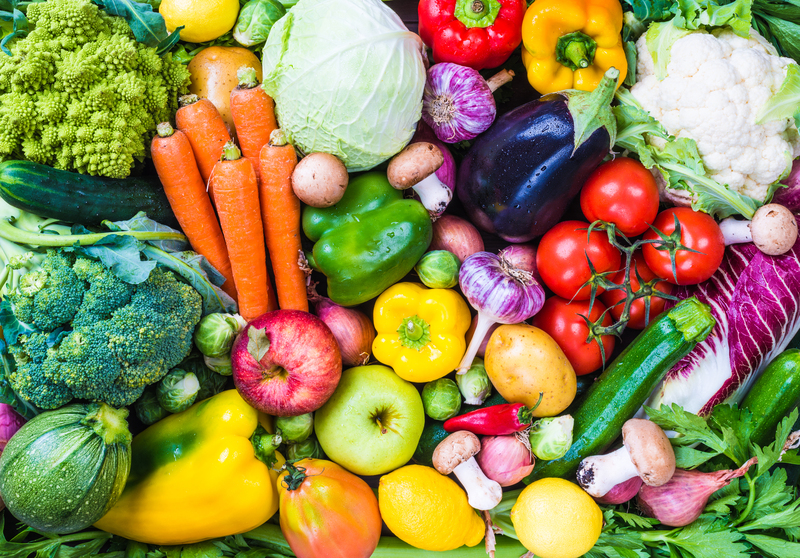Get Growing Anywhere with These 3 Moveable Garden Techniques
Do you love gardening but lack a traditional backyard or fixed outdoor space? Fear not! With the magic of moveable garden techniques, you can cultivate thriving plants wherever you live: balcony, patio, rooftop, or even indoors. In this article, you'll discover three ingenious, portable gardening systems that allow you to get growing anywhere--regardless of space limitations or frequent moves.

Why Moveable Gardening Techniques Matter
As urbanization continues and more people occupy rented apartments or transient living spaces, portable garden ideas are gaining immense popularity. These flexible methods deliver a host of benefits:
- Accessibility: No fixed garden plot or permanent soil bed needed.
- Flexibility: Relocate your garden with the changing seasons, sudden moves, or shifting sunlight patterns.
- Year-Round Growth: Moveable gardens can thrive indoors or outdoors, helping you garden even in winter or inclement weather.
- Pest and Weather Control: Quickly respond to plant threats by repositioning containers to safety.
- Urban Greening: Turn patios, rooftops, and balconies into lush, productive zones.
Let's dive into the top three moveable garden systems that can empower you to grow food, flowers, and herbs -- anytime, anywhere.
1. Container Gardening: The Ultimate Moveable Classic
Container gardening remains the most popular and versatile portable gardening strategy. It simply refers to growing plants in pots, tubs, buckets, planters, or any container that can be moved from place to place.
Benefits of Container Gardening
- Anywhere, Anytime: Perfect for balconies, patios, windowsills, and rooftops.
- Creative Freedom: Choose containers of any shape, color, or size to match your style.
- Soil Control: Customize the soil composition for specific plant needs.
- Easy Relocation: Move containers with ease to avoid excessive sun, frost, or pests.
How to Start Your Own Moveable Container Garden
- Choose Your Plants: Select varieties that suit your light conditions--think tomatoes, lettuce, herbs, or ornamentals like petunias and ferns.
- Pick the Right Containers: Use pots with drainage holes to prevent waterlogging. Materials like terracotta, ceramic, or recycled plastic are both stylish and practical.
- Add Quality Potting Mix: Regular garden soil can be too dense; opt for a light, organic potting mix and consider adding compost for nutrients.
- Water and Fertilize: Containers dry out faster than in-ground beds, so monitor moisture closely. Liquid organic fertilizers can provide a growth boost every 2-4 weeks.
- Position Wisely: Place your containers where they get the best possible light, then rearrange as seasons or weather change.
Creative Container Options
Be inventive! Besides traditional pots, consider:
- Repurposed buckets or wooden crates
- Old wheelbarrows
- Hanging baskets (for trailing plants and herbs)
- Mobile raised beds on caster wheels
With portable garden pots, the only limit is your imagination!
2. Vertical Gardens: Upward Mobility for Small Spaces
If horizontal space is scarce, why not grow up instead of out? Vertical gardening techniques transform walls, fences, and vertical supports into lush green displays, making them ideal for urban dwellers. These movable vertical gardens are especially useful for maximizing productivity in minimal square footage.
How Vertical Gardens Work
Vertical gardens use a support system to anchor planters or planting pockets. They can be freestanding or mounted, and range from simple hanging planter bags to modular, living walls with built-in irrigation.
- Wall Planters: Modular panels or pocket systems hang directly on walls or fences for a sculptural effect.
- Trellises and Obelisks: Climbing plants like peas, cucumbers, or beans use these supports to grow upward.
- Hanging Structures: Multi-tiered baskets or shelves suspend from railings or beams, making a "garden in the air."
- Wheeled Vertical Towers: Rolling units that can be moved wherever light is best.
Step-by-Step: Building a Moveable Vertical Garden
- Identify Space: Choose a vertical surface--balcony rail, wall, or fence. For true mobility, create a large freestanding rack with caster wheels.
- Select the Right System: Fabric wall pockets, recycled bottle planters, or stacked planters all work. For edibles, deeper pockets are better.
- Install Securely: Mount or stabilize your system, ensuring it can bear the weight of soil and plants when watered.
- Plant and Grow: Use compact, shallow-rooted plants such as herbs, strawberries, succulents, or salad greens that love vertical environments.
- Rotate and Relocate: Move your vertical unit as sun patterns shift or for weather protection. Freestanding racks can roll inside during storms or winter.
Best Plants for Vertical Moveable Gardens
- Herbs: basil, chives, mint, thyme, parsley
- Strawberries
- Lettuce and salad greens
- Trailing flowers: nasturtiums, petunias, lobelia
- Small peppers or bush tomatoes
Moveable vertical gardens offer both beauty and bounty--even for the smallest of apartments!
3. Mobile Raised Bed Systems: Moveable Harvests on Wheels
Raised beds are an excellent way to maximize garden output--especially for veggies and root crops. But did you know you can make them portable? Mobile raised beds feature caster wheels or lightweight frames, letting you roll your harvests wherever needed. These robust setups are ideal for patios, driveways, or anyone who prefers standing-height gardening.
Advantages of Moveable Raised Beds
- Easy Rearrangement: Chase the sun, avoid hail, or bring plants indoors in a cold snap.
- Pest Reduction: Raised beds limit access for common soil pests and can be covered easily for protection.
- Custom Soil Mix: Tailor the soil blend to make rich, friable beds for hungry crops.
- Accessibility: Ideal for those with limited mobility or gardeners who prefer not to kneel or bend.
How to Create a Mobile Raised Bed
- Choose a Bed Type: Kits or DIY--use plastic, metal, or wood planters mounted on sturdy locking wheels.
- Build or Buy: If building, use rot-resistant wood or galvanized steel for durability.
- Ensure Good Drainage: Drill holes in the base or add a layer of gravel under the soil.
- Fill and Plant: Layer compost, rich soil amendments, and your favorite crops--think carrots, peppers, salad greens, or even dwarf fruit trees.
- Roll to the Ideal Spot: Move the bed to chase the best sunlight as seasons change or for easy harvesting.
Best Crops for Mobile Raised Beds
- Leafy greens: kale, spinach, arugula
- Root crops: carrots, radishes, beets
- Compact fruiting vegetables: bush tomatoes, peppers, eggplants
- Herbs and flowers for pollinators
Tip: For larger setups, use heavy-duty locking casters to ensure stability when stationary.
Care and Tips for All Portable Garden Systems
- Water Sensibly: Mobility means faster drying--check moisture often, especially in small containers or sunny spots.
- Feed Regularly: Growing in containers often depletes nutrients, so supplement with organic fertilizers every few weeks.
- Rotate and Reposition: Take advantage of movability--shift gardens to better sunlight, warmth, or away from hazards.
- Watch for Overcrowding: Plants grow fast in healthy soils! Thin seedlings as needed for best results.
- Pest Prevention: Elevate mobile beds off the ground, use covers, or move units away from infestations.
Environmental Considerations and Moveable Garden Sustainability
Portable gardens are eco-friendly when planned thoughtfully. To maximize sustainability, follow these best practices:
- Upcycle Containers: Repurpose old storage bins, baskets, or buckets to minimize waste.
- Organic Practices: Use compost and natural fertilizers for a healthy, soil-based ecosystem.
- Water Conservation: Install drip irrigation or self-watering systems; group containers to reduce evaporation.
- Pollinator Habitats: Plant flowers that attract bees, butterflies, and other beneficial insects.
- Seasonal Adjustments: Overwinter perennials indoors or shelter tender plants from storms and cold.
By prioritizing green methods, your moveable garden can provide not just beauty and food, but also a net positive for the environment.

Moveable Garden FAQ: Your Questions Answered
Can I move my garden indoors for winter?
Absolutely! Most containers, vertical gardens, and even modest raised beds can be relocated indoors. Place container gardens near bright windows or supplement with grow lights for best results.
What's the lightest portable garden option?
Vertical gardens using pocket-style planters or fabric wall hangings are incredibly lightweight and can be easily relocated, even by one person.
How do I prevent root-bound plants in containers?
Select appropriately sized containers, repot as needed, and choose plant varieties that tolerate confinement well. Annual herbs and leafy greens thrive in smaller spaces, while larger veggies sometimes need upgrading.
Do moveable gardens work for fruit trees?
Yes! Dwarf fruit trees such as figs, citrus, and apples can grow well in large pots or tubs, provided you use rich soil and fertilize annually. Move indoors or to sheltered spots at season's end for frost protection.
Start Growing--Anywhere!
The power of gardening that can go where you go is truly liberating. Whether you rely on portable containers, innovative moveable vertical gardens, or robust mobile raised beds, you're free to get growing anywhere--from small apartments to sunny rooftops and everywhere in between.
Remember: the key to thriving moveable gardens is creativity, adaptability, and attentive plant care. As more gardeners embrace portable systems, the dream of fresh, homegrown beauty and flavor moves closer to home for everyone.
Ready, Set, Grow!
Try these moveable gardening techniques and unlock a world of possibilities--where your garden is limited only by your imagination, not by your address.
- Explore containers of all shapes and sizes
- Think vertically and maximize every inch
- Roll out raised beds to chase the perfect conditions
With these moveable garden methods, you can grow, harvest, and thrive--anywhere, anytime.